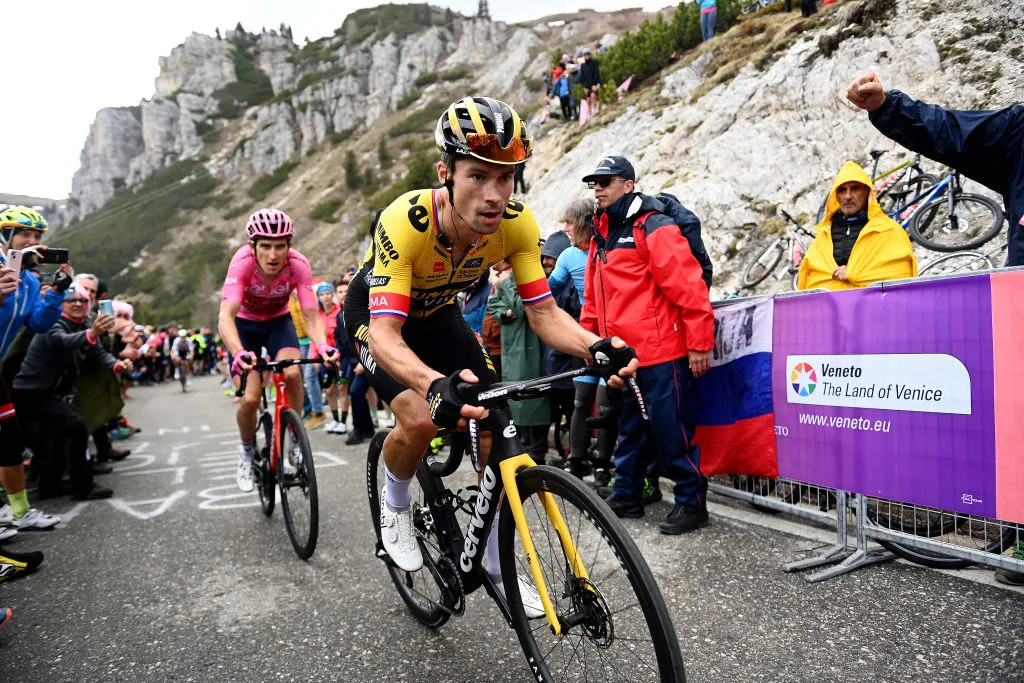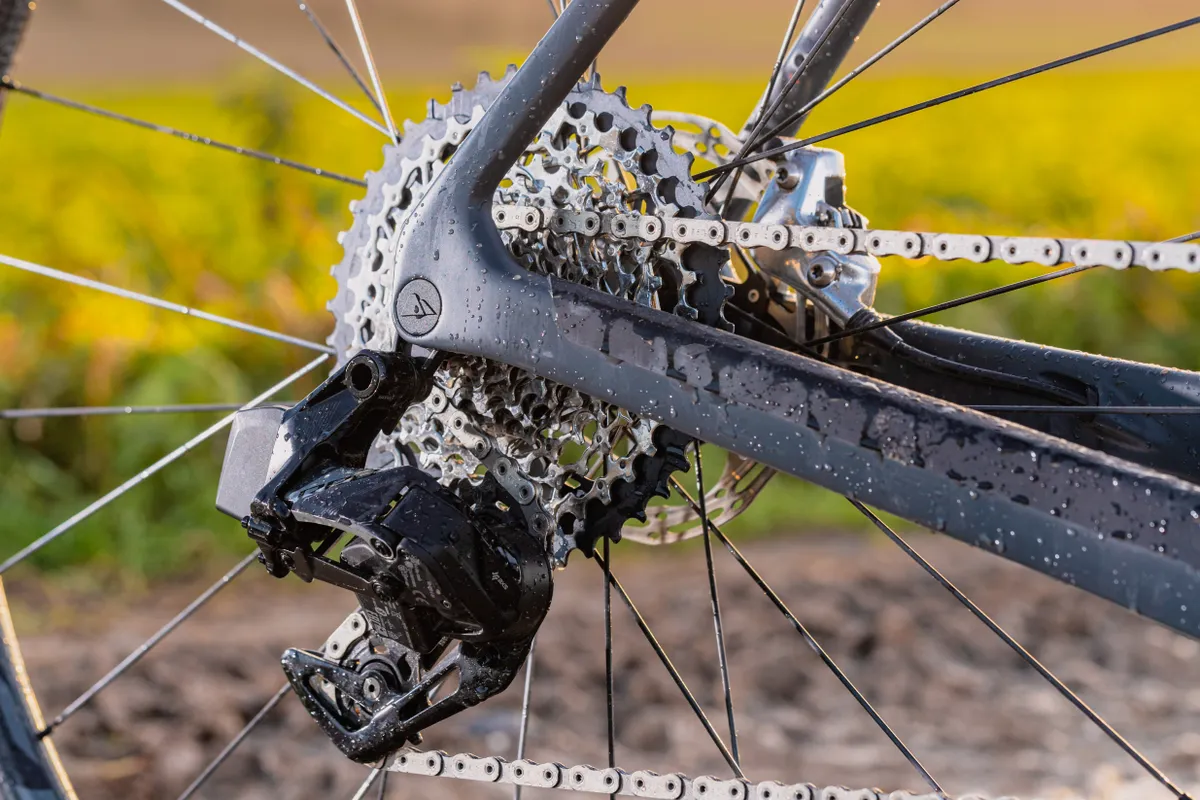Primož Roglič (Jumbo-Visma) used a 1x SRAM Red AXS XPLR gravel bike groupset with a massive 10-44t cassette for the final climb on stage 19 of the 2023 Giro d’Italia.
The Slovenian made the change at the base of Tre Cime di Lavaredo, ditching his usual 2x SRAM Red eTap AXS-equipped Cérvelo R5 in favour of the same bike set up with a single ring.
1x drivetrains are common on time trial bikes, and are sometimes used on flatter races, particularly during the Spring Classics.
However, they are almost never seen in the mountains. So why would Roglič go 1x on a key climb?
1x in the mountains?

To start, with no front derailleur and only one chainring, a 1x setup is usually lighter than a 2x setup.
A 1x drivetrain is also, theoretically, more aerodynamic than a 2x drivetrain.
A single-ring setup can also be more mechanically efficient, with an improved chainline compared to a 2x setup.
Chain retention can also be improved with a 1x setup. However, given the smooth parcours of the climb, this is unlikely to have been a deciding factor.

All of these are marginal gains but, over the course of a 7.2km 7.6 per cent climb raced at WorldTour pace, they could add up.
That said, the time lost swapping bikes, to then be dutifully towed back to the bunch by teammate Sepp Kuss, may outweigh the theoretical savings offered by a 1x setup.
Why XPLR?

While weight, aerodynamics and drivetrain efficiency may be factors, the key is in Roglič's choice of SRAM's Red AXS XPLR drivetrain and, more importantly, its gearing.
Whereas Roglič’s teammate, Wout van Aert, switched to a 1x setup on standard SRAM Red AXS road components for Milan–San Remo, pairing a 52-tooth chainring with a 10-28t cassette, Roglič opted for the gravel-specific (in theory, anyway) XPLR parts.
SRAM's XPLR line-up was launched in 2021, with gravel-ready gearing introduced alongside the RockShox Rudy Ultimate XPLR fork and Zipp 101 XPLR wheels.
XPLR gearing comprises of the 10-44t cassette used by Roglič and a rear derailleur designed to accommodate those wide-range sprockets. As XPLR is 1x-specific, if Roglič wanted to use that cassette, he needed to switch to a single-chainring. SRAM offers 38t to 46t chainrings for XPLR as standard, though we don't know what size chainring Roglič opted for in Italy.
Speaking of which, stage 19 represented a brutal day in the Dolomites, with more than 5,400m of ascent over the 183km parcours, and three climbs going above 2,000m in elevation.
But big days in the mountain are par for the course in a Grand Tour – and we never see riders reach for a 1x setup with a cassette as big as Roglič's on stage 19 – so why else might the Slovenian have switched to his XPLR-equipped bike?
A test ahead of stage 20?

With that in mind, it’s possible Roglič had more pragmatic reasons for switching to the unusual setup.
Stage 20 of this year’s Giro d’Italia is an 18.6km individual time trial. After a flat opening half, the final 9.8km of the stage ascends 1,050m with gradients kicking up as steep as 22 per cent.
We expect many teams will swap to a lightweight climbing bike at the base of the climb.
It’s possible Roglič wanted to trial the super-low gearing of his 1x setup in a – relatively – low-pressure setting ahead of using it in the penultimate stage of this year’s race. It's there that the 10-44t cassette and simplicity of 1x may come to the fore.
Roglič finished stage 19 in fourth place, knocking three seconds off of Geraint Thomas’ GC (Ineos Grenadiers) lead, and goes into the time trial 26 seconds behind the race leader.
A 1x renaissance?
Though they’ve become very common in time trials, it’s fair to say 1x road bike drivetrains have seen mixed success.
Aqua Blue Sport raced exclusively on 1x drivetrains until the team folded in 2018, with some riders specifically blaming the team’s downfall on its early adoption of single-ring drivetrains.

However, 2023 has seen something of a renaissance for 1x drivetrains. As we've already mentioned, Roglič’s teammate, Wout van Aert, lined up for Milan-San Remo onboard a single ring Cervélo S5.
Other riders have also experimented with 1x drivetrains. Victor Campenaerts’ (Lotto–Dstny) raced the Opening Weekend of the Spring Classics on a 1x Ridley Noah Fast, though he paired that with a 2-speed Classified internal gear hub.
While we think an all-out 1x drivetrain takeover is unlikely, it’s clear some teams and riders feel a single-ring setup offers advantages in certain scenarios.
